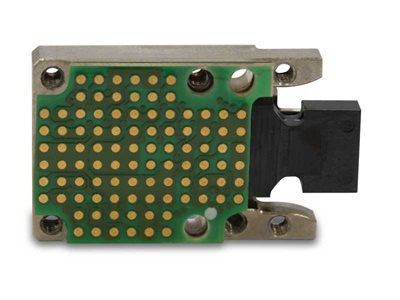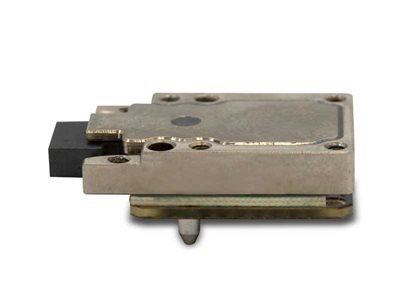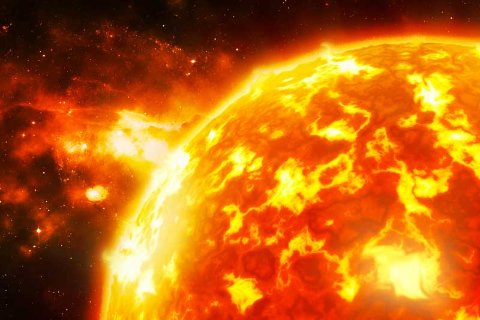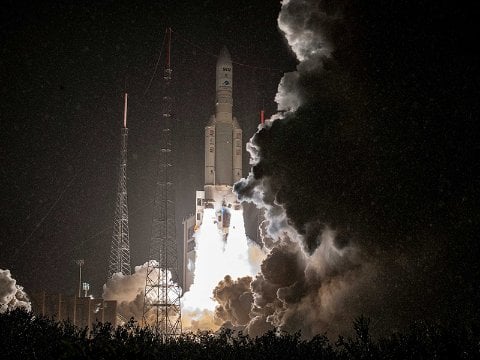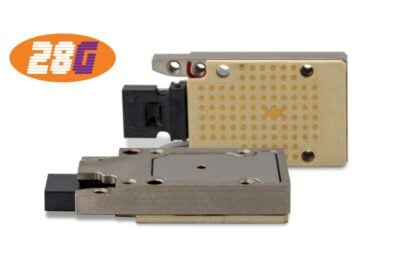- Small: Less than 6 mm high (module and interposer)
- Rugged: withstand radiation doses >100 krad (Si) and qualified per MIL-STD 883 shock and vibration
- Expected life: up to 20 years
- Performance: up to 10.3125 Gbps/channel over a recommended operating temperature range of –40 ºC to 85 ºC
- Sensitivity: –9 dBm for BER 10–12
- Low power consumption: 115 mW/lane (<10 pJ per bit)
- 4 TRX (4+4)-lane per device (40G, full duplex)
- 12 TX or 12 RX channel per device (120G, half duplex)
- Multimode 850 nm wavelength laser
- Over 100 m reach on OM3 ribbon fiber
- Standard MT parallel fiber connector
- RoHS
- Equalizer, pre-emphasis, adjustable output
- Monitoring: LOS, RSSI, temperature, etc.
- Attaches to system board with 1.55 mm LGA interposer
Applications
- High-throughput communication satellites
- LEO satellite constellations
- GEO satellites (with extended lifetime option)
- Board-to-board and payload-to-payload connections
- High I/O density, high BW communication links
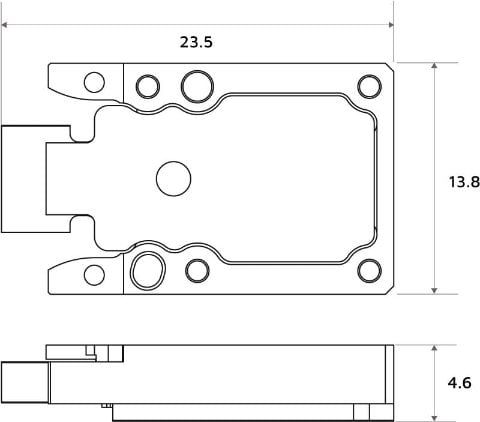
Drawing of SpaceABLE 10G SL. Dimensions are given in mm.
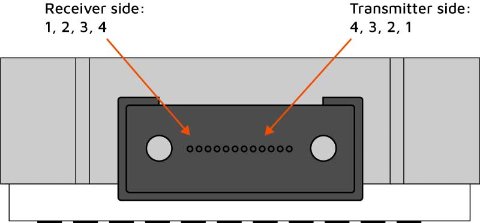
Fiber assignment of SpaceABLE 10G SL 4TRX
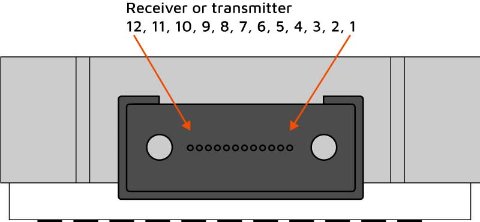
Fiber assignment of SpaceABLE 10G SL 12TX and 12RX
Test summary
- Proton testing: Total Non-Ionizing Dose (TNID)
- Heavy ion testing: Single Event Effect & Latch-up (SEE and SEL)
- Gamma Ray using Cobalt-60: Total Ionizing Dose (TID)
- Random vibration: NASA GEVS, GSFC-STD-7000A
- TVAC: Vacuum < 5E-5 hPa
- Outgassing: ECSS-Q-ST-70-02C
LightABLE qualifications
- Vibration tests per MIL-STD-883, Method 2007.3
- Mechanical shock tests per MIL-STD-883, Method 2002.4
- Thermal shock tests per MIL-STD-883, Method 1011.9
- Damp heat tests per MIL-STD-202, Method 103B
- Cold storage tests per MIL-STD-810, Method 502.5
- Thermal cycling tests per MIL-STD-883, Method 1010.8
References
Stephen Buchner, Paul Marshall, Scott Kniffin and Ken LaBel. “Proton testing guidelines”, NASA/Goddard Space Flight Center, 2002.
Doug Sinclair and Jonathan Dyer. “Radiation Effects and COTS Parts in SmallSats”, SSC, 2013.
28G Optical Transceivers for Space
Electrical connection with interposers
LightABLE™ and SpaceABLE™ electrical connection with interposers
Optical connection with screw-in connector
Optical connection with MicroClip
Optical Interconnect Design Challenges in Space


